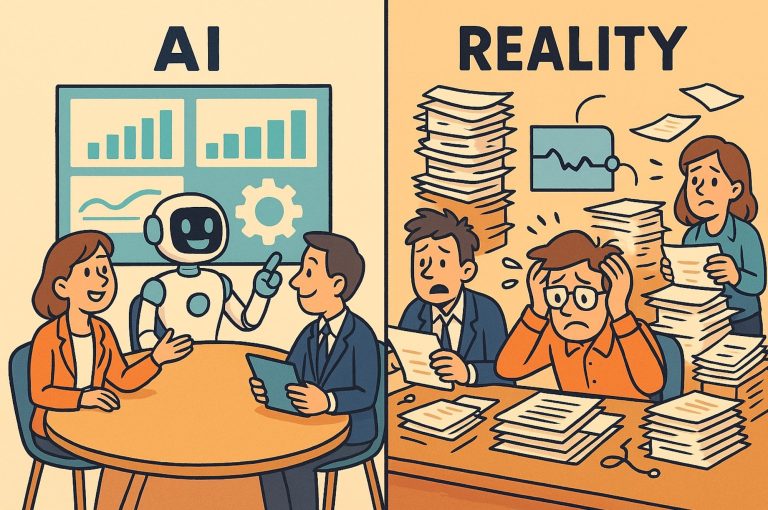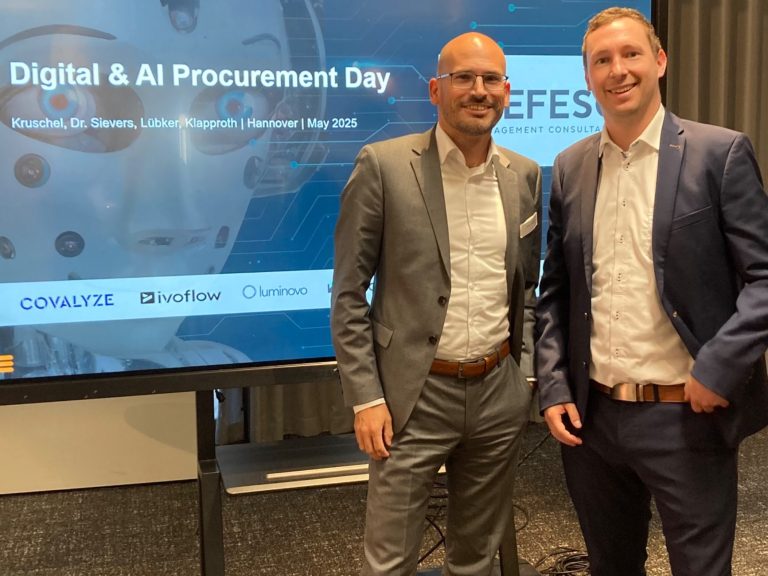Blog

Everyone wants AI, but where to start?
55 % of questioned professionals state that the existing data is difficult to leverage due to quality issues as the latest GenAI study by EFESO DACH (Deutschland, Österreich, Schweiz). This is just one reason why many organizations often don`t start, with AI projects.
The buzz around AI in Hashtag#procurement is loud, but implementation is still rare. Many organizations struggle with where and how to begin.
Challenges:
- Lack of clear use cases
- Poor data structure or access
- No internal ownership
- Overloaded IT teams
Ask yourself:
- Where in the procurement process do we have friction, inefficiency, or lack of visibility?
- Do we have the data (volume, quality, structure) to support AI-driven decision-making? Who can help to get the data corrected?
- Who owns the topic internally? Do we have the knowledge internally?
What works:
✅ Start with one use case (e.g. demand forecasting, risk scoring, negotiation prep)
✅ Ensure business and tech teams co-own it
✅ Don’t wait for perfect data, pilot and learn fast
Follow for more.
Hashtag#Procurement Hashtag#HRTech Hashtag#AI Hashtag#transition Hashtag#digitalization
Image: AI-generated
Curious about the details? Connect with Niklas Luebker to learn more about their latest GenAI study or send me a message.

The current state of Digitalization & AI in companies
At the Digital & AI Procurement Day, we had honest, insightful discussions on where companies really stand when it comes to AI in procurement.
Here are some key takeaways:
✅ Everyone wants AI, but many don’t know where to start.
It’s often not about technology, but the fundamentals: clear use cases, structured data, internal capacity.
Result: lots of slides, little execution. Many organizations either have no digital strategy or digitalization happens in silos without alignment.
✅ The tooling landscape is confusing.
From generative AI to predictive analytics and supplier intelligence, the market is moving fast, but maturity levels vary widely.
What works depends entirely on your current state. Many “AI” tools turn out to be automation under the hood. That’s not necessarily bad, but transparency is key.
✅ Digitalization isn’t a project, it’s a permanent state.
The foundation is still missing in many companies: data quality, system integration, a shared vision.
Without that, AI remains a buzzword. You need a clear target picture, defined use cases, and a strategy everyone understands.
✅ Mindset is the real game changer.
The most valuable inputs came from those who are willing to experiment, fail fast, and learn quickly.
Try tools. Partner with vendors to shape solutions. Create a culture that embraces trial and error.
Run pilots with clear success criteria. Even failed pilots teach you something – and that keeps you ahead.
Bottom line:
AI in procurement won’t work on autopilot. But with structure, clarity, and a realistic view of your digital maturity – and with partners who understand the tooling landscape – the potential is huge.
And importantly: Hashtag#Procurement should be in the lead to drive this transformation.
Why?
- Because procurement sits at the intersection of business needs, data, and suppliers.
- It has the transparency across the organization to identify priorities, align stakeholders, and execute change, but only if empowered by a clear mandate from the C-Suite.
Thanks to EFESO DACH (Deutschland, Österreich, Schweiz) and Niklas Luebker, Dr. Kenneth Sievers, Dominik Wichmann, Isabel Klapproth for organizing a great event, where nearly every participant already committed to joining again next year.
The next session in Munich is already booked. If you’re interested in attending, send me a DM to join the waiting list!
Hashtag#Procurement Hashtag#AI Hashtag#DigitalTransformation Hashtag#SupplyChain Hashtag#FutureOfWork Hashtag#A
